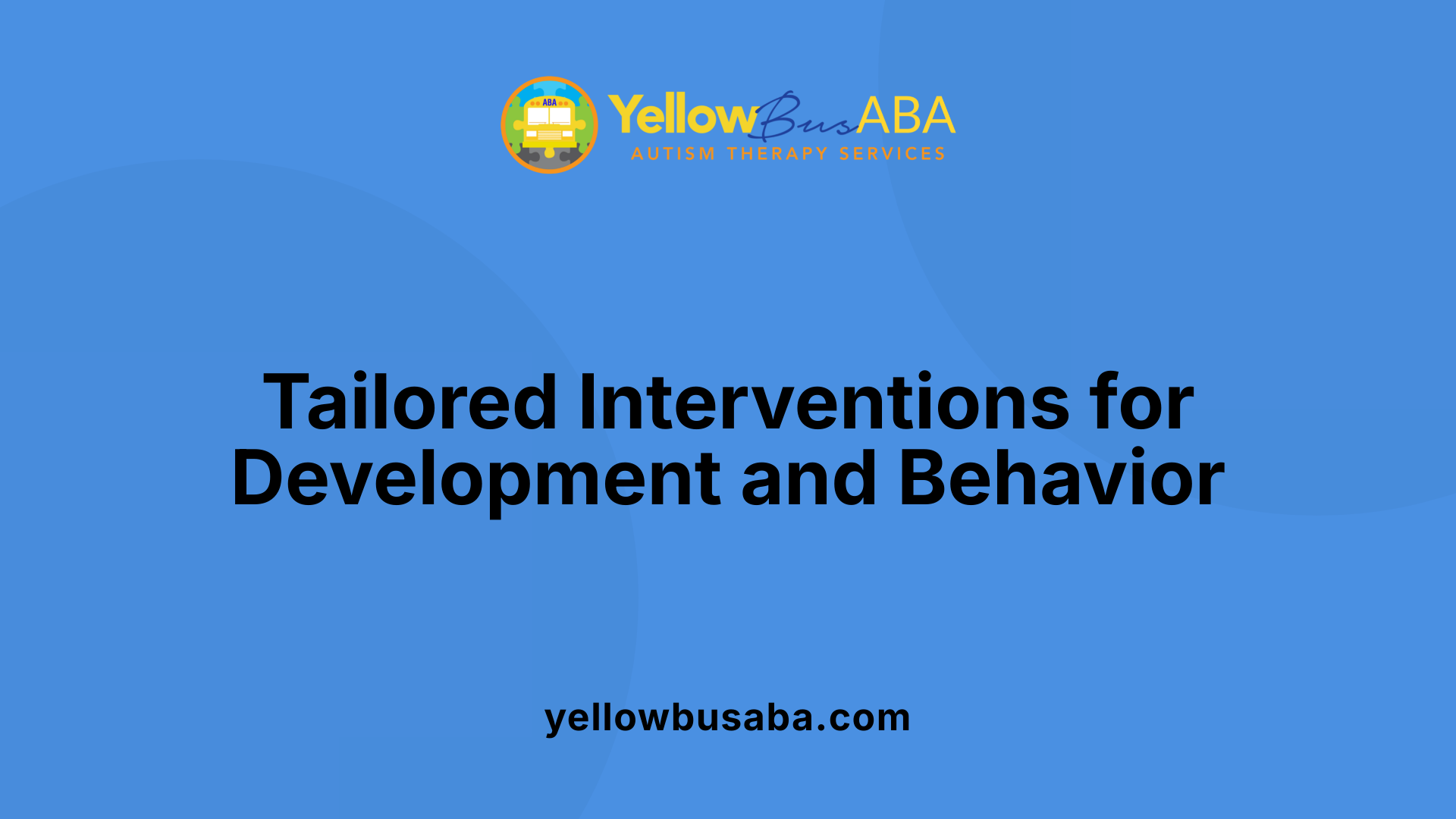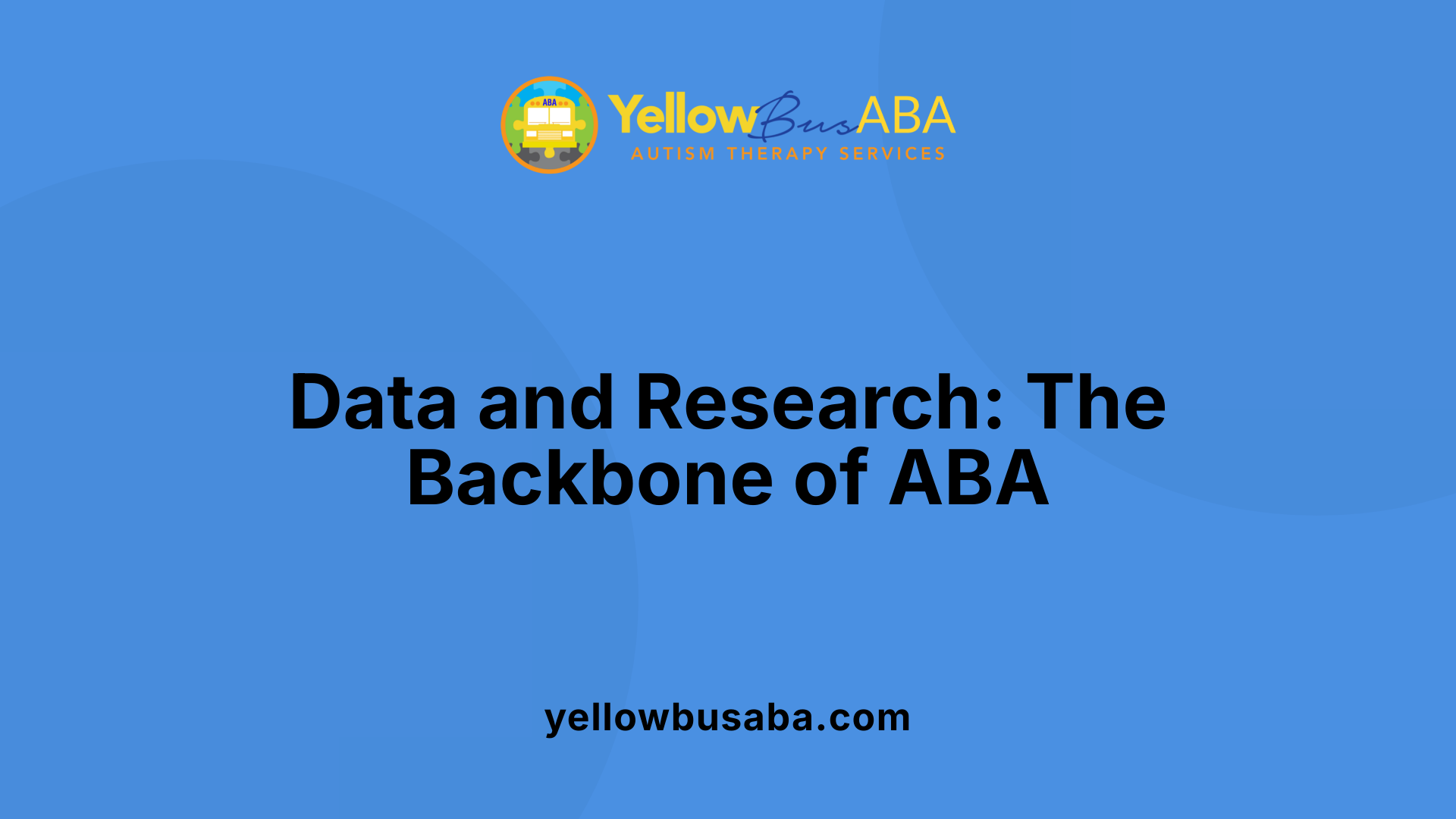Understanding ABA Therapy and Its Impact on Autism Support
Applied Behavior Analysis (ABA) is a proven, evidence-based approach rooted in the science of learning and behavior. It fundamentally influences how behaviors are acquired and modified, creating meaningful progress in children with autism spectrum disorder (ASD). As the most widely recognized intervention, ABA employs systematic strategies to help children develop critical skills and reduce challenging behaviors, leading to improved independence, communication, and social participation.
What is ABA Therapy and How Does It Support Children with Autism?

What is ABA therapy and how does it support children with autism?
Applied Behavior Analysis (ABA) therapy is a well-established, scientifically proven approach designed to help children with autism spectrum disorder (ASD) improve their skills and reduce problematic behaviors. Rooted in behavioral psychology principles like reinforcement and shaping, ABA focuses on understanding how behavior works and how it is affected by the environment.
At its core, ABA employs techniques such as positive reinforcement, where desirable actions are rewarded to encourage repetition, and antecedent-behavior-consequence analysis, which helps identify triggers and consequences of behaviors. These methods enable therapists to develop customized plans that address each child's unique strengths, challenges, and interests.
One of the primary goals of ABA therapy is to develop essential skills. This includes improving language and communication, social interactions, attention, academic skills, and daily living activities like dressing and self-care. Additionally, ABA helps decrease challenging behaviors such as aggression or self-injury, supporting better adaptation and emotional regulation.
ABA programs are highly individualized. A behavior analyst, often a Board Certified Behavior Analyst (BCBA), conducts thorough assessments to create tailored treatment plans. These plans outline specific, measurable goals, which are regularly monitored through data collection. Continuous evaluation allows adjustments to enhance progress.
Sessions can be set in various environments, including the child's home, school, or community settings, making the therapy flexible and integrated into daily life. This adaptability ensures that interventions are accessible and relevant.
Research over decades consistently supports the effectiveness of ABA in improving multiple outcomes for children with ASD, particularly when started early and delivered intensively. Therapies are usually carried out by trained professionals like BCBAs and Registered Behavior Technicians (RBTs).
In summary, ABA therapy uses a structured approach to foster positive behavioral changes, empowering children with autism to develop vital skills and improve their quality of life. It is regarded by health organizations worldwide as a best-practice, evidence-based treatment that supports the developmental journey of children with ASD.
Main Benefits of ABA Therapy for Children with Autism

What are the main benefits of ABA therapy for children with autism?
ABA therapy provides a wide range of positive outcomes for children diagnosed with autism spectrum disorder (ASD). Supported by decades of research, it is recognized as an effective, evidence-based treatment that helps children acquire vital skills and reduce problematic behaviors.
One of the core benefits of ABA therapy is its focus on developing communication and social skills. Interventions often include techniques such as positive reinforcement and natural environment training, which encourage children to engage with peers, interpret non-verbal cues, and improve their language abilities.
Enhancing independence in daily life is another important aspect. Children learn practical skills such as dressing, using the bathroom, and handling utensils, which promote greater autonomy and confidence. The individualized nature of ABA means programs are tailored to each child's specific needs and strengths, making learning more effective.
ABA therapy also plays a significant role in reducing challenging behaviors like aggression, self-injury, or tantrums. Behavior analysts track behaviors meticulously and design strategies that promote positive change while addressing underlying sensory or emotional triggers.
Starting early in life is associated with better outcomes. Early, intensive ABA interventions—often before age six—can improve cognitive, language, and adaptive skills, paving the way for long-term success and, in some cases, facilitating integration into mainstream classrooms.
Motivation and engagement are fostered by leveraging children’s interests and preferences. Reinforcement methods such as praise, preferred activities, and tangible rewards motivate children to learn new skills and participate actively in therapy.
Furthermore, ABA supports emotional regulation and overall functioning. Children learn healthier coping strategies, which help them manage emotions better and participate more comfortably in social and community settings.
In summary, ABA therapy's structured, tailored approach leads to significant improvements in communication, independence, behavior, and emotional well-being—forming a solid foundation for lifelong development.
Effectiveness of ABA in Promoting Behavioral Improvements
 Research consistently underscores the benefits of Applied Behavior Analysis (ABA) in fostering positive changes in children with autism spectrum disorder (ASD). Multiple studies have shown that ABA can significantly boost skills in social interaction, communication, and daily routines. Structured and intensive therapy programs—often involving 25 to 40 hours per week over one to three years—are associated with notable developmental gains.
Research consistently underscores the benefits of Applied Behavior Analysis (ABA) in fostering positive changes in children with autism spectrum disorder (ASD). Multiple studies have shown that ABA can significantly boost skills in social interaction, communication, and daily routines. Structured and intensive therapy programs—often involving 25 to 40 hours per week over one to three years—are associated with notable developmental gains.
The personalized nature of ABA, employing techniques such as positive reinforcement, prompting, and shaping, is tailored to each child's unique strengths and needs. This approach has been validated by over 20 scientific investigations, establishing ABA as a scientifically supported, evidence-based intervention.
Early intervention, especially before the age of six, enhances the likelihood of substantial improvements. Children receiving prompt and consistent ABA therapy tend to develop better language, social, and adaptive skills, which can translate into better independence later in life.
Major health organizations, including the American Psychological Association and the U.S. Surgeon General, endorse ABA as a best practice treatment for ASD, emphasizing its scientifically proven effectiveness. Long-term benefits include not only improvements in specific skills but also greater confidence, emotional regulation, and the ability to cope with real-world situations.
Overall, ABA provides a robust framework for supporting children with autism, with research robustly affirming its effectiveness across many developmental areas.
Core Principles and Techniques of ABA

What are the core principles and interventions used in ABA to bring about behavioral change?
Applied Behavior Analysis (ABA) operates on fundamental scientific principles of behavior, including reinforcement, punishment, extinction, and shaping. These principles form the foundation for systematically modifying behaviors by adjusting environmental factors.
Reinforcement involves providing positive consequences immediately after a desired behavior, encouraging its recurrence. For example, praising a child for sharing toys increases the likelihood they'll share again. Conversely, punishment aims to reduce undesired behaviors by applying adverse stimuli or removing positive ones.
Extinction is a technique used to decrease behaviors by withholding reinforcement, effectively making the behavior less likely to continue. Shaping involves reinforcing successive approximations toward a target behavior, gradually guiding a child to perform complex skills.
Interventions in ABA include strategies like Discrete Trial Training (DTT), Natural Environment Teaching (NET), Functional Communication Training (FCT), and prompt strategies such as visual cues or physical assistance. These methods are tailored to individual needs, with therapists carefully designing and implementing plans based on thorough assessments.
Data collection is central to ABA; behavior analysts track the frequency, duration, and intensity of behaviors before and after interventions. This ongoing monitoring guides program adjustments, ensuring each child's progress is maximized.
Overall, ABA consistently applies these core principles through personalized, evidence-based strategies to bring about sustainable behavioral improvements. The collaborative effort between therapists, caregivers, and individuals supports meaningful skill development and behavior change, emphasizing ethical and respectful treatment.
Components of a Typical ABA Behavior Change Program
 A typical ABA behavior change program combines various structured techniques and personalized strategies to support children with autism in developing essential skills. At the core, evidence-based methods like Discrete Trial Training (DTT), Natural Environment Teaching (NET), and Functional Communication Training (FCT) are employed to help children learn new behaviors and communicate effectively.
A typical ABA behavior change program combines various structured techniques and personalized strategies to support children with autism in developing essential skills. At the core, evidence-based methods like Discrete Trial Training (DTT), Natural Environment Teaching (NET), and Functional Communication Training (FCT) are employed to help children learn new behaviors and communicate effectively.
These programs are not one-size-fits-all. Instead, they revolve around individualized treatment plans that are carefully tailored based on comprehensive behavioral assessments. These assessments include direct observations, interviews, and standardized tests, which guide the development of specific goals for each child.
Data collection is integral to ABA programs. Professionals regularly record information on behavior frequency, duration, and context, which allows for ongoing tracking of progress and necessary adjustments to interventions. This evidence-based approach ensures the strategies remain effective and aligned with each child's evolving needs.
The role of trained professionals is central in implementing ABA therapy. Board Certified Behavior Analysts (BCBAs) design and oversee the programs, providing expertise and ensuring the interventions are scientifically grounded. Trained therapists known as Registered Behavior Technicians (RBTs) deliver daily therapy sessions under the supervision of BCBAs.
Caregiver involvement enhances the success of ABA therapy. Families are guided to reinforce skills through daily routines and at-home activities, promoting consistency and helping skills generalize beyond therapy settings.
Modern ABA programs also utilize technological tools such as visual aids, interactive software, and data analytics platforms. These tools increase engagement, streamline data collection, and facilitate real-time adjustments to treatment plans. Together, these components create a comprehensive, adaptable approach aimed at improving communication, social skills, and independence for children with autism.
The Role of Data and Research in ABA Effectiveness

How does data collection support ABA therapy's effectiveness?
In ABA therapy, gathering data is essential for measuring progress and ensuring interventions are effective. Behavior analysts collect data before, during, and after treatment sessions. This data includes the frequency, duration, and intensity of behaviors, providing a clear picture of a child's development.
This continuous process allows professionals to identify which strategies produce the best results. If certain techniques aren't leading to progress, the data highlights the need for adjustments. Conversely, it confirms when specific approaches are successful, enabling tailored treatment plans.
Research shows that making decisions based on concrete data improves the overall effectiveness of ABA therapy. This evidence-based approach ensures that interventions are continually refined according to the child's unique needs and response patterns, leading to better behavioral outcomes.
Long-Term Benefits and Broader Impact of ABA Therapy

What are the long-term benefits of ABA therapy for children with autism?
ABA therapy offers enduring positive effects that extend well beyond immediate behavioral changes. One of the most notable benefits is the development of independence and essential life skills. Children trained with ABA often acquire self-care abilities such as dressing, toileting, and using utensils, which are crucial for daily functioning.
In addition to practical skills, ABA significantly improves social and emotional functioning. Children typically show better emotional regulation, enhanced communication abilities, and increased social interaction with peers and family members. These improvements help them engage more fully in community and school settings.
Preparation for real-world situations is another important advantage. ABA programs teach children behavioral management skills, social cues, and coping mechanisms, enabling a smoother transition into environments like school, extracurricular activities, and community settings. This preparation supports their ongoing development and fosters greater independence.
Furthermore, children often experience boosts in confidence and self-regulation. As they master new skills and behavioral strategies, their self-esteem increases, empowering them to face challenges proactively. This sense of confidence can promote lifelong adaptive skills, supporting their success in academic, vocational, and personal areas.
Overall, the long-term advantages of ABA therapy include not only improved developmental outcomes but also enhanced quality of life. Early and sustained intervention helps cultivate autonomy, resilience, and social integration, setting children with autism on a path of lifelong growth and success.
Addressing Ethical and Research Gaps in ABA

What are some ethical considerations and research gaps in ABA?
Applied Behavior Analysis (ABA) has a long-standing history as an evidence-based treatment for children with autism spectrum disorder (ASD). However, ethical considerations have arisen over the years, especially concerning past practices such as the use of aversive techniques, which are now largely outdated and discouraged. Today, the focus has shifted toward more humane and respectful methods, emphasizing positive reinforcement and individualized approaches.
Another ethical issue relates to the concept of normalization versus honoring neurodiversity. Critics argue that some ABA practices aimed at making children appear more typical can overlook the importance of accepting autistic traits and fostering self-acceptance. This debate highlights the need for ethical models that respect each child's identity while supporting their development.
Parental involvement is also an area of ethical concern. While parental input is vital for tailoring interventions, its burden can sometimes be substantial, raising questions about consent, autonomy, and the child's best interest.
Despite its proven benefits, research gaps exist within ABA. Most studies involve small sample sizes and rely heavily on single-case experimental designs, limiting broad generalizability. There is a significant need for large-scale, prospective studies that compare ABA with other interventions, such as speech therapy or social skills training, and that include comprehensive assessments of quality of life outcomes.
Furthermore, many existing studies do not measure long-term effects or consider the perspectives of individuals with ASD themselves. Expanding research efforts to encompass broader populations and diverse cultural contexts is essential to ensure that ABA practices are equitable, respectful, and effective.
Overall, ongoing advancements in research and ethics aim to enhance the inclusiveness, respectfulness, and scientific rigor of ABA. Integrating positive behavior support principles, fostering cultural competence, and emphasizing neurodiversity will help bridge current gaps, ensuring that ABA remains a responsible and effective intervention.
Summing Up the Power of ABA in Supporting Children with Autism
ABA therapy stands as a cornerstone in the array of autism interventions, backed by decades of scientific research and clinical success. Its core principles of reinforcement, skill-building, and data-driven adjustments enable children to acquire vital life skills, improve social and emotional functioning, and foster independence. While grappling with ethical debates and research limitations, ongoing advances and a focus on individualized, respectful practices continue to enhance its efficacy and inclusiveness. For many children with autism, ABA remains a pathway to more functional, fulfilling lives, demonstrating that positive behavioral change is both achievable and sustainable through scientific, compassionate application.
References
- Applied Behavior Analysis (ABA) | Autism Speaks
- 6 Life-Changing Benefits of ABA Therapy for Children with Autism
- Applied Behavior Analysis in Children and Youth with Autism ...
- The effectiveness of applied behavior analysis program training on ...
- ABA Therapy and Its Role in Positive Behavioral Change
- ABA Therapy and Autism: Empowering Positive Behavior Change
- The effectiveness of applied behavior analysis program training on ...



.jpg)

.avif)
